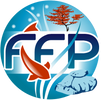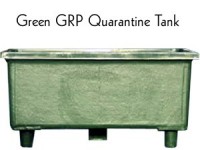Why should you quarantine your new fish?
New fish can be carrying parasites, and in rare cases systemic infections (internal problems) and although the Japanese breeders and Koi dealers normally treat fish when they first arrive, there is no guarantee that problems will not occur after you have purchased your Koi.
However, bear in mind that the vast majority of Koi are strong and healthy when they are first harvested in Japan, and are not riddled with parasites or infection.
Most problems occur because of the induced stress of up to 24 hours in a plastic bag during transit, and because of substantially differing water conditions, in particular pH and general hardness.
The induced stress of their long journey and radically different water quality can inhibit the immune system response in new Koi. This can lead to parasite attacks, and ultimately bacterial infections. During the journey, your new Koi has almost certainly been subjected to water temperature changes of 15 deg. C over a 24 hour period which adds to the stress problem.
Therefore, rather than treating problems after they occur, we need to get the Koi 'comfortable' in their new environment as quickly as possible, to ensure that their own immune system is working properly, so that they can fight of any potential problems without human intervention.
The most important thing that new Koi need when they first arrive is prime quality water and a few days rest to settle in to their new environment.
The last thing Koi need having spent up to 30 hours in a plastic bag and in a stressed state is to be dumped in potassium permanganate, malachite or anything else nasty.
The only 'additive' you may want to consider is salt at 0.5 oz per gallon with Elbagin as a supportive treatment in the pond to overcome stress and get them get used to the new water conditions.
Other than this all they need is good water, and plenty of it. Many people run into problems quarantining fish in a vat or pond which is too small.
Your quarantine facility should be minimum 1000 gallons with temperature control and a mature filter. Setting up you quarantine facility 3 weeks before the fish are due to arrive is asking for trouble.

